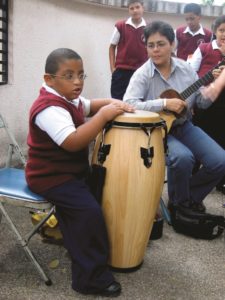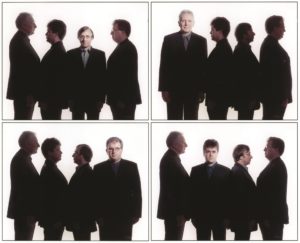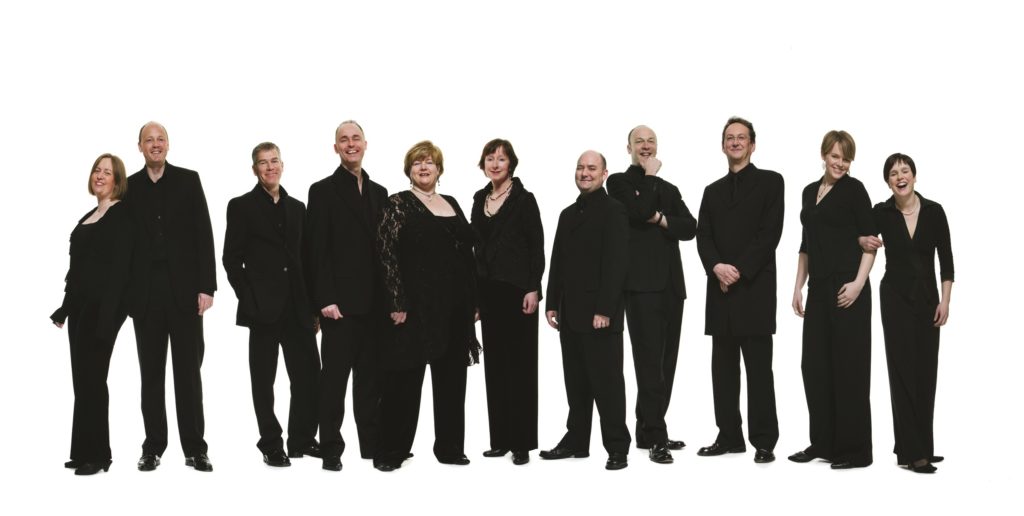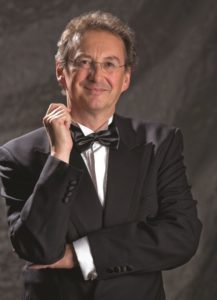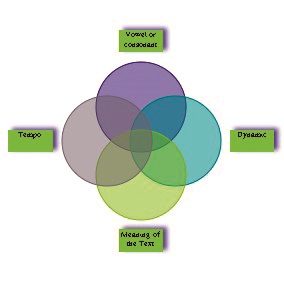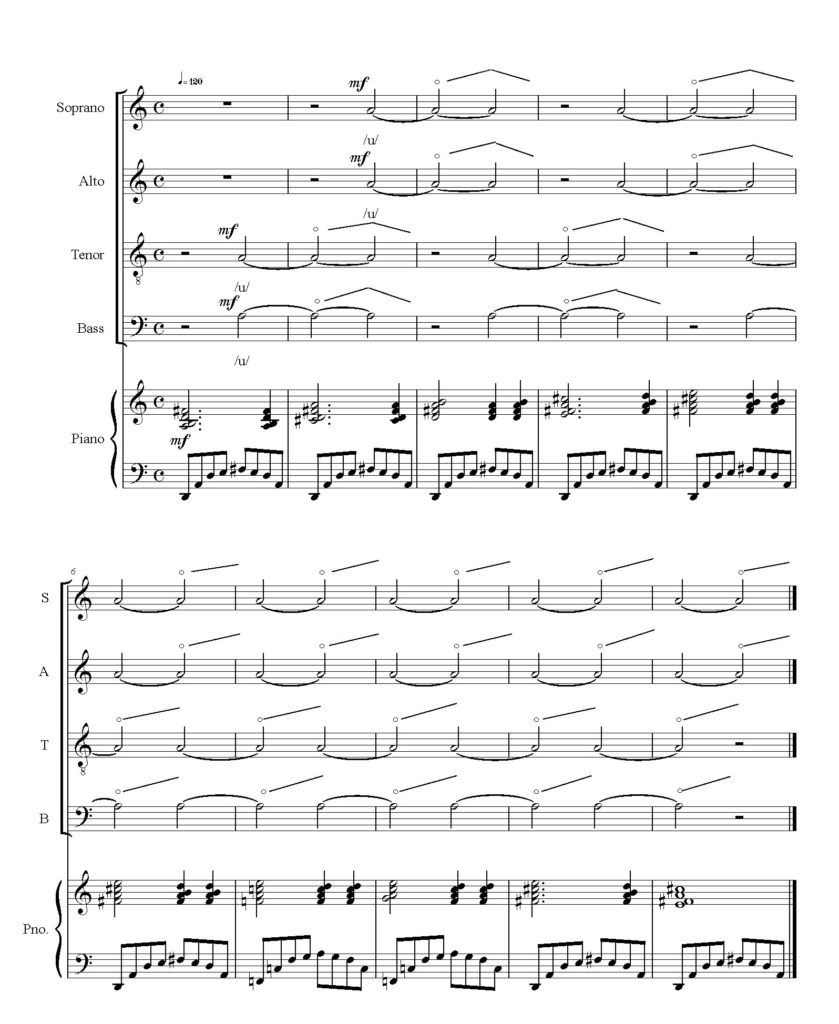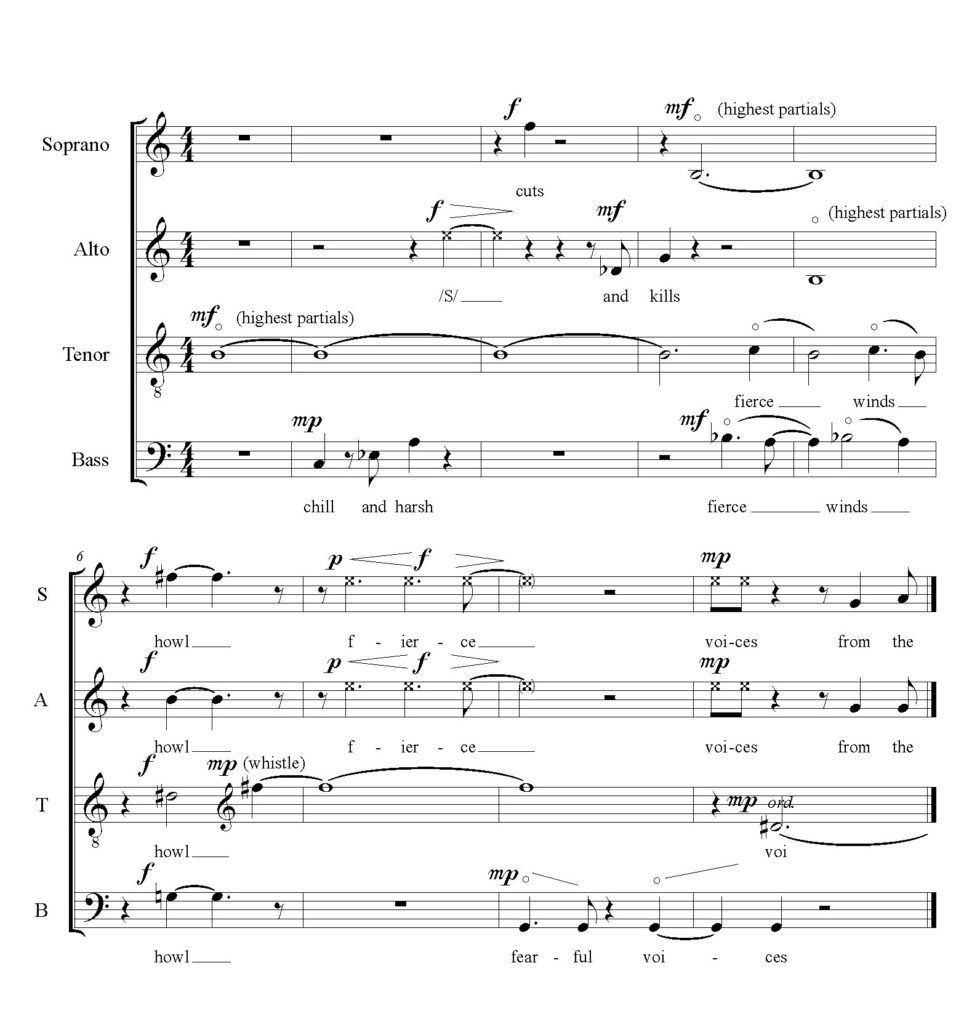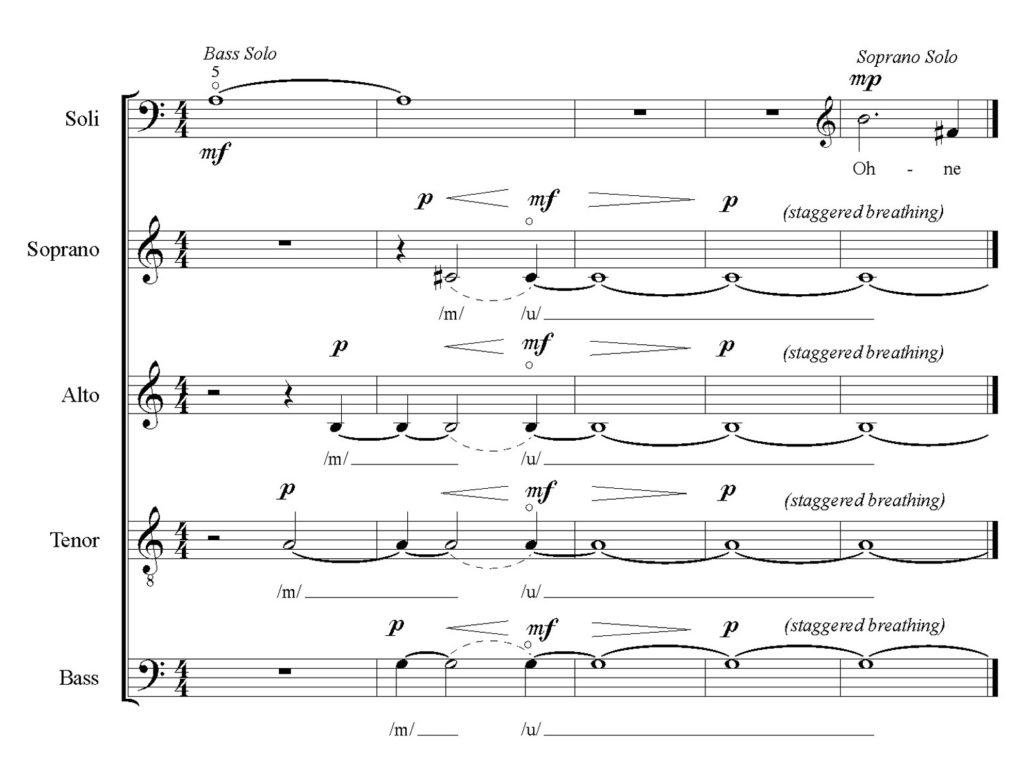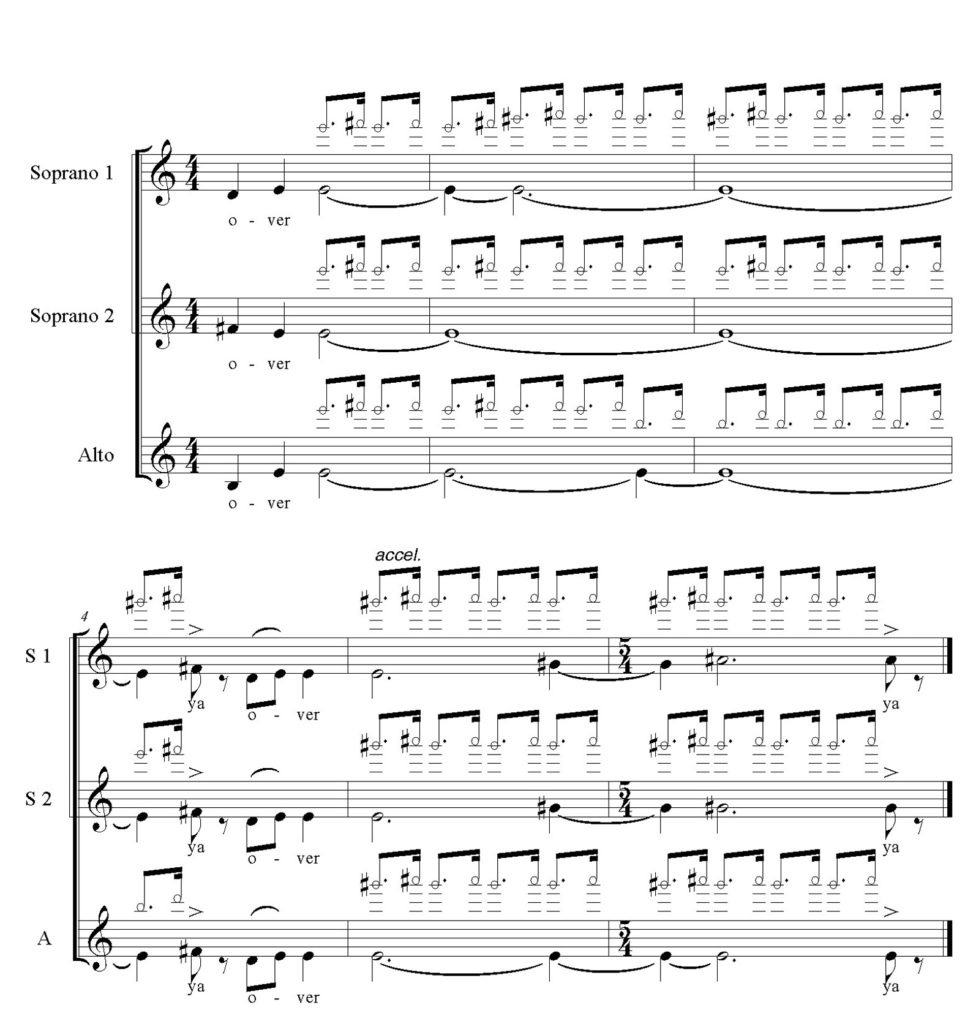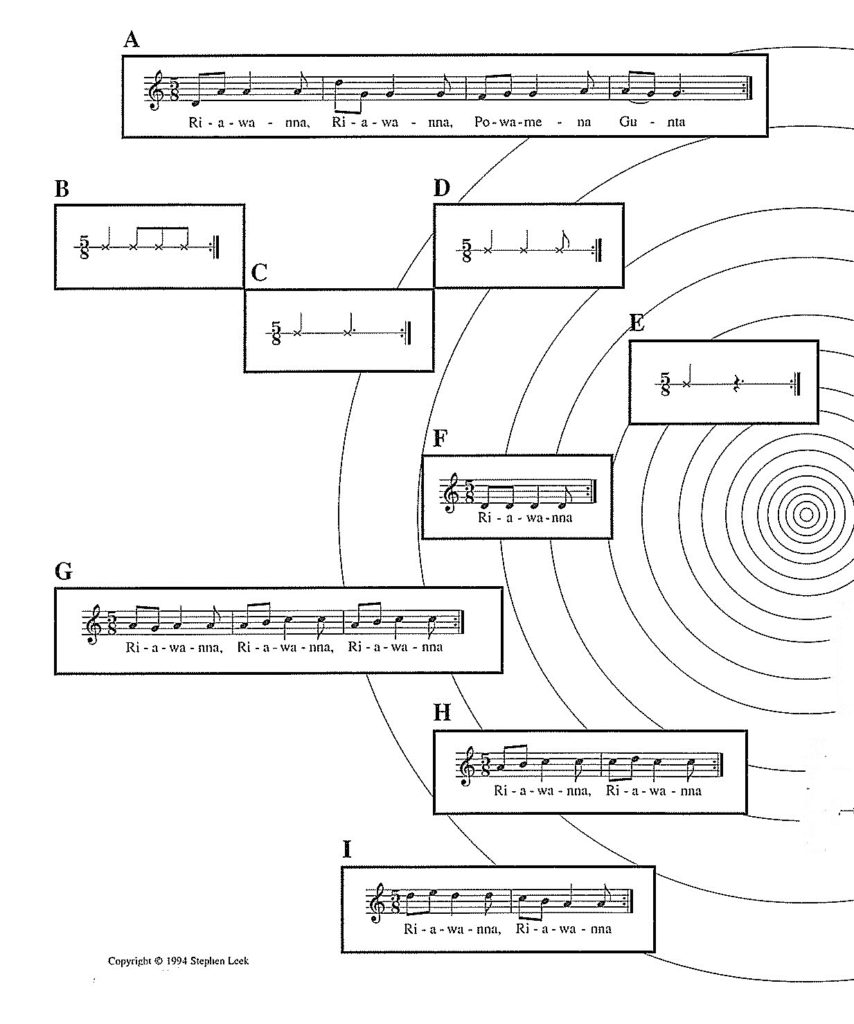Walter Marzilli
choral conductor and teacher
This article appears here with the kind permission of ‘Lo Spettacolo’, published by Società Italiana degli Autori ed Editori.
A few centuries ago, in what might creatively be termed the history of human transformation, a truly remarkable phenomenon made its appearance. Ostensibly strictly confined to the world of music, it was destined nevertheless to have both social and ethical repercussions. In the 16th century many small boys underwent castration in an attempt to create a new race of asexual angels blessed with celestial voices. From a strictly physiological perspective, the process involved an operation on a boy’s testicles before they began to secrete testosterone. Normally, the action of this hormone would bring about sexual maturity, and as a secondary sexual characteristic would affect the larynx, resulting in vocal change. With the release of the hormone into his system, the singer would no longer be able to reach the treble range. His voice would rapidly drop by an octave, moving towards one of the three final categories of bass, baritone or tenor. Without the drastic surgical intervention mentioned above, these changes would take place during the course of a few long years, and would be followed by a period of rest and retraining with the new, masculine voice. The surgeon’s skilled hand interrupted this long wait,[1] however, conferring a pseudo-female texture on the boy’s voice without harming it.[2] For better or for worse, the singer’s voice would retain this characteristic for the rest of his life.
Many such children came from the very poorest of backgrounds, often the latest additions to large families in serious financial difficulty, and their castration represented a chance for future riches in the eyes of some unscrupulous parents. For this reason, and owing to the tempting offers made by both court and ecclesiastical choirs, this cruel practice continued for about four centuries.[3] The goal was purely aesthetic: the creation of a new kind of voice that would far outclass those of the falsetto singers common at the time, who were simply healthy men imitating a female voice [falsetto comes from the Italian falsare, literally ‘to alter’ or ‘distort’].
It is well known that women, where they were not banned entirely from doing so, met great difficulty wherever they tried to perform on stage,[4] just as when they attempted to sing in church choirs. A child’s voice, despite possessing its own unique texture and characteristics, could sometimes be used to substitute that of a woman. This was a way of bypassing all the obstacles associated with the existing social order, which any woman wishing to pursue an artistic career as a singer was sure to run into. But replacing women with children, while it resolved many problems, also created just as many new ones. These were linked to several factors, among them physical stature (especially with regard to the theatre), professional reliability and the fact that a child’s voice would only last until puberty, which meant a continual need to train new children. In short, it was necessary to find as convincing a substitute for the female voice as possible, while also effectively tackling the problems listed above. The solution that emerged was that of male castration. In order to obtain the illusion of a woman’s voice in a man’s body, which brought with it the added benefit of not having to break any social conventions, opera and choral music lovers of the time were willing to overlook certain shortcomings. For example, one of the nuove cantanti or ‘new singers’ filling the role of the lovesick, consumptive princess might, due to his unusual physical condition, stand head and shoulders above those around him and weigh in at something over 200 pounds.[5]
This short introduction should be enough to give some idea of the importance that has been attached to the ‘sound’ of the human voice throughout history. Almost every situation, no matter what its psychological or social significance, makes use of some form of vocal accompaniment. There is no need to list the endless occasions in which all people modify their voice, according to changes in time, place, or simply in their mood. The voice is as integral to our bodies as our arms or legs, but it is also the only part of us that can escape and reach far beyond the physical confines of the body. It is a metaphysical extension that goes further than the space occupied by mere flesh, revealing the most intangible aspect of our inner selves, a spiritual side that is as intimate as it is fleeting. It is, therefore, a priceless asset: a gift that can enrich our existence with the enormous possibilities it offers. One need only think of how easy it is to be transfixed by a voice on the radio, which all of us, unconsciously or otherwise, instantly associate with an imagined physical appearance. Somebody who is actually quite plain in appearance can be transformed into a fascinating figure simply through the power of the voice; the people we imagine when we listen to voices on the radio are the products of our idealised mental projections. This is why television, despite its much more physical, tangible nature, cannot replace radio: people will not allow it to destroy their artistic creations, incomparable masterpieces created by the power of imagination and preserved in a private mental archive.
The sheer number of possibilities for vocal communication means that so many different uses for the voice have developed, as diverse and numerous as the occasions in which they are employed. Every art that makes use of speech or song has given rise to a specific and continually evolving vocal technique, differing according to the social, cultural and aesthetic restrictions of the situation.[6] The developments that have taken place in every kind of singing are there for all to see, or rather are there for all to hear, especially in the field of popular music. For instance, a rich semi-tenor voice that made frequent use of the falsetto style, as was popular in the 1950s, would simply provoke amusement if imitated today. But behind the immutable passage of time and the accompanying inevitable changes in musical taste, a general pattern emerges which is worth taking into consideration. Observing today’s vast panorama of musical styles, it is clear that there has been a trend towards deeper female voices, in clear contrast with the more traditional high-pitched soprano. The preference now is for a strong, decisive sound, which is connected with connotations of virility. This is certainly the pattern that emerges when one listens carefully to contemporary popular music,[7] and even more so among child or teenage singers. In this sense, even karaoke can be an important analytical tool for studying the phonic tendencies of the general population, revealing an undeniable tendency towards the masculinisation of the female voice. A similar phenomenon is apparent in the field of opera, even if it seems to have been limited to a greater proportion of mezzo-sopranos among students on singing courses than was the case in the past. If anything, there is now a shortage of genuine low-contralto and bass voices.
In popular music, which has a greater impact on the market, and as such a greater impact on the social environment than more ‘cultured’ forms of music,[8] another clear pattern emerges: a particular style of vocal emission that we might describe as ‘throat voice’, in order to differentiate it from the more canonical styles known as ‘head voice’ and ‘chest voice’, is much more common. This is why, of all the characteristics of popular music, it is this ‘throat voice’ style that has come to define it, so much so that any departure from this style is now automatically labelled as ‘operatic’.
Normally, a ‘throat voice’ style of singing is simply the result of a lack of vocal technique in moving from one vocal register to another, what is known as the passaggio di registro. Such training would allow the singer to utilise the ‘head voice’ in order to produce higher notes.[9] Pop singers find themselves in a position in which they are expected to sing high notes, but without employing the passaggio di registro, the results of which would presumably bear too much resemblance to opera. This means that they are forced to invent their own techniques in order to hit the highest notes,[10] especially as they are well aware that their earnings are directly linked to their musical productivity.
Unless the performer in question is lucky enough to be anatomically suited to such vocal efforts, the most logical consequence is likely to be a hyperactivity of the vocal cords,[11] which can lead to the formation of nodules.[12] The voice then takes on a characteristic texture, easily recognisable to the trained ear, and which renders any further artistic use of it unlikely. The timbre deepens, sounds become huskier,[13] the length of time that the singer can exhale for becomes shorter, and medium-high notes become practically unreachable, or at the very least require a tremendous effort. Where it is not due to other physiological causes, this is the cause of the rasping, ‘smoky’ voices of some singers, from both Italy and elsewhere, who have managed to make of it a kind of trademark. The success of such singers bears out the popularity of this type of voice, which nonetheless lies beyond the normal critical boundaries of a purely aesthetic evaluation. It might be thought of as a phenomenon restricted to a successful elite, were it not for the amount of imitation it inspired. At times the imitation is unconscious, but in any case this vocal behaviour has spread to society at large, and across a large range of social groups.[14]
Current vocal trends are also connected with breathing techniques. Enlarged veins can often be seen not only on singers’ necks during performances, but also on those of people when they speak. If the moment in which the speaker draws breath is delayed due to the emphasis being put on the last words of an utterance, the organs involved in speech are placed under stress, and this can have an effect not only on the workings of these organs, but also on the qualities of the voice they produce. To go from recognising the results of such strain in one’s own voice to actively making use of them is not as much of a leap as one might suppose. There are now many female singers who make use of this type of vocal style. For the reasons mentioned above, clear, high sounds are the first to be lost while,[15] for the same reasons, deeper sounds are emphasised. Hyperactivity of the vocal cords can therefore be considered to be a limited cause of deepening female voices, but other, different factors can also result in a similar phenomenon.
The well-attested increase in average height, for example, may have had a certain influence on the trend towards deeper voices, in both men and women. Tall people owe their stature to an overactive pituitary gland, which controls the growth and development of the body. The length of the vocal cords is also proportional to the growth of the rest of the body, a consequence of the lengthening of the thyroid cartilage.[16] In tall people this tends to be more pronounced, allowing them to produce deeper, low-pitched sounds.[17] This can also be seen in the physical qualities that typically distinguish bass singers from tenors; the former tend to be tall, long-limbed, lean and vigorous,[18] with a fast metabolism, while tenors are generally shorter, with different physical characteristics, and are wont to put on weight due to their slower metabolism.[19]
Although it may at first seem a subject area that has little to do with the masculinisation of the female voice, it is worth lingering for a moment to consider the existence of the pineal gland, which is situated in the brain. Despite being buried deep in the cranium, one of its qualities is photosensitivity.[20] Among its other functions is the regulation of the pituitary gland, responsible for growth as well as controlling the output of testosterone by the Leydig cells. The fact that it is sensitive to light could, indirectly, mean that the pineal gland has a bearing on the subject of this essay. Through prolonged light exposure,[21] the pineal gland can be induced to stimulate prematurely the pituitary gland. The result of this would be the precocious secretion of testosterone which, as was noted previously, brings about changes in the male voice and triggers the process that leads to sexual and vocal maturity.[22]
It must also be taken into consideration that the unknowing consumption of hormones from increasingly rich and complex foods, often treated or altered through the use of hormonal substances that encourage growth and enhance appearance, including both meat and non-meat products,[23] can contribute to the precocious onset of these physical changes. Indeed, the consumption of these hormones has a direct effect on the growth of certain parts of the anatomy, and as such has a direct impact on the present investigation. The larynx, the organ that is responsible for producing sound, is also classed as a secondary sexual organ, and is extremely sensitive to the effects of hormones in the body.[24]
Once sexual maturity has been reached, teenagers find themselves in a whole series of new situations, connected to various different factors, and analysing them too closely would cause the present investigation to stray into many other fields. There is one particular area, however, that it is worth examining in more detail: the way in which adolescents show that they have reached their goal, which in their eyes at least is of huge social importance. Although perfectly evident to the individual involved, the physical proof of this alteration will, for obvious reasons, normally remain private. It is at this stage that a whole series of frequently exaggerated behavioural patterns begin to emerge, through which adolescents of both sexes seek to display the changes that they have undergone. Clothes, facial expressions, makeup, cigarettes, and in some extreme cases drugs, can all be interpreted as attempts to show off one’s maturity through messages that reach beyond the confines of the body itself, but at the same time are not a part of it. But there is one thing that truly belongs to us, that represents our own personal identity and is at the same time inextricably bound to it, that is able to send clear messages out into our surroundings and is the only part of our bodies which, as mentioned previously, is able to give shape to our inner selves: our voice[25] There is no better way, therefore, to present our own self-image to those around us.
The connection between these facts and the masculinisation of the female voice becomes apparent as soon as one considers the role models available to an adolescent girl who wishes to highlight her new status as a woman. Observing the situation as an outsider, and attempting to remain as objective as possible, it is quite clear that the image of the mature woman continually transmitted by advertisements, films, television and the media in general is one of confidence and charm, accompanied by a certain hint of aggressiveness. The other side of the female character that receives particular emphasis is that of athleticism, tenacity and courage, all on clear display in films that feature female leads. It is easy to see how impressionable young women could be influenced by, and attempt to identify themselves with, such role models. This hypothesis would certainly be in keeping with the fact that the vast majority of smokers smoke their first cigarette during puberty, the stage in life when they feel it most necessary to emphasise their own new-found maturity. In the same way it is easy to see how a natural tendency towards deeper, more virile voices has developed, as it is seen to offer those qualities that are instrumental to a woman’s success in modern society. A high, clear voice would seem absurd.
Thyroid dysfunction, already mentioned above, may also have played a considerable role in the reduced clarity of women’s voices.[26] According to recent endocrine research, an extremely high percentage of women (more than 70%) are affected by abnormalities in thyroid function, involving the appearance of nodules on the thyroid gland. The presence of these nodules[27] can lead to a notable increase in the volume of the gland, situated next to the base of the larynx,[28] just beneath the thyroid cartilage. Their location may impede the normal mobility of the larynx,[29] inhibiting the capacity of the vocal cords to vibrate and thus reducing the number of vibrations relative to airflow. Taking into consideration the acoustic laws that govern sound production, this condition too would lead to lower-pitched, deeper sounds.
It would appear that we find ourselves once again in the midst of a vocal transition similar to that of the castrati, but one that is working in the opposite direction: rather than men striving for female voices, women are trying to render their voices more masculine, even if this time, luckily, the transformation is a bloodless one. In actual fact, if one were to investigate more thoroughly, an attentive ear would also discover a contrary trend in the male voice, as higher pitched, clearer sounds offer greater penetrative power.[30] But this is an area of study for future research papers. For the time being, it is enough to remember that, from a physiological point of view, the larynx, the source of the voice, is classed among the secondary sexual organs. With this in mind, it may not be too fanciful to posit a possible parallel between the mutability of human vocal identity and that of our sexual identity, which is every bit as mobile.
[1] This was certainly not surgery as we might expect it today: carried out in secret due to the prohibitions in place, with scant regard for hygiene, and methods that bore a closer resemblance to butchery than to modern medicine. Indeed, it was due to their manual ability with knives and razors that butchers and barbers were apparently chosen to carry out these operations rather than surgeons, who were in any case much fussier and more demanding.
[2] There are no doubts, though, about the existence or extent of the psychological trauma; the lives of castrati were deeply marked by their experience. Neither great artistic success nor wealth, which were in any case only ambitions when the operation was carried out, could ever erase such a disturbing episode from their memories.
[3] The last castrati singers of the Sistine Chapel remained there until shortly after the appointment of Monsignor Lorenzo Perosi as Papal choirmaster in 1898. In 1902, it was decreed that no more castrati would be taken on. Those already in service continued until retirement. Among them was Alessandro Moreschi, who ended his castrato career in 1913.
[4] Readers are reminded that actors of the time were held in such ill repute that they were buried outside the city walls. From this one can well imagine what was thought of women who worked in the theatre, whether as singers or actors.
[5] This abnormal growth was one of the consequences of castration. Along with testosterone, the production of another important substance called inhibin was also interrupted. Inhibin counterbalances the effects of the pituitary gland, which controls growth and development of the body. It must be said that ever since then we have become accustomed to see Mimì, though supposedly dying of consumption, still decidedly ‘well-upholstered’.
[6] Actors’ voices have changed greatly in the last forty years, to the extent that a black and white film would be unrecognisable if it were redubbed today. The same process can be observed in theatre and opera.
[7] This term is used in as objective a sense as possible; questions regarding the true artistic value or cultural importance of ‘popular’ music falls outside the remit of this investigation.
[8] The use of this adjective hints at a degree of elitism, but here is intended merely to imply a certain kind of music.
[9] The passaggio di registro creates a homogeneity of vocal timbre in the transition between lower and higher notes, allowing for a smoother and more solid vocal performance across a singer’s range. Failure to use this technique is what gives all pop music tracks one of their common features; there is a notable difference between the ‘verse’, normally sung in a whispered, uncertain voice in the medium-low vocal range, and the ‘chorus’, where the singer reveals their perhaps unexpected talents by employing powerful, high notes.
[10] As with opera music, in popular music the high notes are the greatest crowd-pleasers, and as such are highly sought-after.
[11] This hyperactivity is due to the effort of emitting sound in physiologically anomalous conditions.
[12] This term refers to the tough swellings that can form on the edges of the vocal cords when they are placed under prolonged strain. It has been shown that the condition is common among teachers, particularly those working in primary and middle schools. Their voices are subjected to an abnormal level of strain, as they have to use them so often. Overuse leads to chafing between the edges of the vocal cords, and to the formation of actual callouses at the point of contact.
[13] This term is used to describe a voice that is accompanied by an audible breath sound, which is caused by the fact that some of the air passing through the vocal cords is not vibrated, and as such not transformed into sound. This in turn is due to the hardened callouses that prevent the cords from vibrating freely, meaning they cannot transform the current of air into sound waves.
[14] The normal tendency to emulate the style of famous people, especially in the case of popular music, finds particular expression in the widespread phenomenon of karaoke, which remains popular in many countries, even if it is now a little passé here in Italy. The imitative component of karaoke is its most prominent feature, and as such those who engage in it find themselves closely copying the vocal style, for better or worse, of the original artist.
[15] In producing these sounds, the vocal cords take on their flattest shape, caused by the movement of the arytenoid cartilage. The same principle is at work in all string instruments, where the thinnest strings (in relation to their length) produce the highest, clearest notes.
[16] More commonly known as the Adam’s apple, the thyroid cartilage is one of four that make up the larynx, together with the cricoid, arytenoid and epiglottic. The cartilaginous shield of the Adam’s apple protects the vocal cords, which are stretched between the thyroid and the arytenoid cartilages.
[17] The same occurs in string instruments, where longer strings produce deeper sounds (where string thickness does not change).
[18] Though they are not necessarily slim, especially as they grow older.
[19] A recent theory has hypothesised that sound production can be improved by the presence of fat deposits in the laryngeal region. This would appear to contradict the fact that stouter singers tend to be tenors or sopranos, with high, clear voices. In the case of sopranos the vocal cords are forced to complete over 1,000 oscillations per second (soprano F5: 1396.9 p/s), an action which one might expect would be slowed down by the weight of fatty deposits next to the cords. If one considers that a small droplet of mucous on the vocal cords brings about an immediate reduction in voice function, it should be very clear just how precarious an opera singer’s success really is. In the moment of sound production the singer’s voice depends on a very delicate equilibrium within the voice box, and the smallest additional weight can be enough to break it.
The presence of fat in the chest area is different, in that it essentially contributes to the production of medium-low notes. Fat in this part of the body, if seen as a means of transmitting vibration, can increase the resonant capacity of the chest, as this capacity is directly proportional to the molecular density of the means of transmission. This is why sound travels five times faster through water than through air.
[20] More than 20 different hormones have been isolated from among its secretions. These are to be important for many vital bodily functions, and not only neurological. It is closely involved with the development of the secondary sexual organs, among them the larynx, lynchpin of the vocal organs. The pineal gland also regulates the transition between periods of sleep and wakefulness.
[21] In reality we spend most of our time indoors rather than outside. This explains why we are more exposed to powerful, fixed light sources, such as electric lighting, especially when one considers that lights in workplaces are often left on even in the daytime. These lights typically illuminate the entire working area, offering no opportunity of finding ‘shade’.
[22] This may explain the fact that in Italy, as in other countries that enjoy a sunny Mediterranean climate, Knabenchöre (treble voice choirs) have always been a rarity, limited to a few particular institutions (e.g. the Sistine Chapel and Milan Cathedral). Conversely, such choirs were always common in the countries of northern Europe. Sexual maturity and the vocal changes that accompany it evidently occurred later here, as the pineal gland was less stimulated by the harder climate and more overcast skies. The longer duration of the treble voice thus accorded greater stability to the Knabenchor in terms of its membership, encouraging its continuation and diffusion.
[23] One proof of this abnormal hormonal presence in the human body is the extremely elevated percentage of women who suffer from thyroid problems. In the last few years thyroid dysfunction has also been affecting an increasing number of men.
[24] Female opera singers are often known to avoid performing during their menstrual cycle, because of the changes that the larynx undergoes in this period.
[25] Speaking on the telephone with someone we know is much like using a videophone, in that the sound of their voice alone gives the sensation that they are physically present.
[26] It is to be remembered that the term ‘thyroid dysfunction’ refers to the thyroid gland, and not to the thyroid cartilage.
[27] They can appear in large numbers and reach considerable size, to such an extent that they are easily visible to the naked eye.
[28] In normal conditions, the thyroid volume of a woman who lives far from the coast may be as much as twice that of a woman living by the sea, due to the shortage of iodine. In these cases, a further increase in volume can cause highly visible results.
[29] This is often due to the fact that, while the thyroid is composed of a soft, pliable material, the nodules are more solid, and often coated with a kind of chalky plaster, with which the body tries to defend itself from and imprison these foreign bodies.
[30] The difficulty of finding deep bass voices was mentioned above.
Translated from the Italian by Ross Nelhams, UK
Edited by Gillian Forlivesi Heywood, Italy

 Cristian Grases obtained his Masters Degree in Choral Conducting under Alberto Grau and María Guinand in Caracas, Venezuela, and his Doctorate in Choral Conducting at the University of Miami. He is an award-winning composer active as a guest conductor, clinician, adjudicator and pedagogue in North and South America, Europe, and Asia. He is a Board Member of IFCM and the chair of the Ethnic and Multicultural Perspectives Committee for the ACDA, Western Division. He is currently an assistant professor at the University of Southern California in Los Angeles, USA. Email: cgrases@gmail.com
Cristian Grases obtained his Masters Degree in Choral Conducting under Alberto Grau and María Guinand in Caracas, Venezuela, and his Doctorate in Choral Conducting at the University of Miami. He is an award-winning composer active as a guest conductor, clinician, adjudicator and pedagogue in North and South America, Europe, and Asia. He is a Board Member of IFCM and the chair of the Ethnic and Multicultural Perspectives Committee for the ACDA, Western Division. He is currently an assistant professor at the University of Southern California in Los Angeles, USA. Email: cgrases@gmail.com